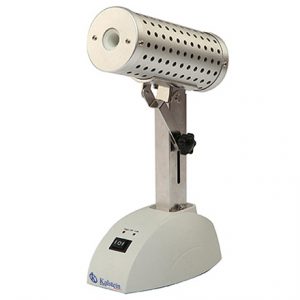It’s important to observe safety measures, because it’s not just the right way to work, it’s the only way. Consequently, laboratory work involves the use of equipment and other elements, the hazards of which it is mandatory to study in order to prevent in all respects. Thinking about safety measures in the laboratory is a formal requirement, as the risk of accidents such as burns, poisoning, fire or electric shock, are always present.
In this case, with the use of Bacticinerators, as equipment used to sterilize microbiological handles by heat and infrared in biosafety cabinets, they become easy to use, although they do not bring fire, and with wind resistance, their use requires care measures by the operator, because in this way, irreparable damage can be avoided.
Safety precautions
The use of lighters is just one of the aerosol-generating hazards in the laboratory. The use of this type of equipment inside cabinets poses two problems: the first is the ability to split air flows inside the cabinets, putting working personnel at risk. Secondly, serious accidents, including explosions, have been reported.
However, thanks to the correct use of Bacticiners, which, unlike lighters, have a cylinder that is superheated and allows disinfection of the culture handles. Most are electrically powered and have the advantage that during the incineration process, aerosolization of the materials present in the bacteriological coves is prevented.
But for correct use, safety measures must be applied, including :
- Use the computer in a ventilated work area.
- Insulating supports should be used when handles or inoculation needles are inserted into the resistor.
- The sterilizer is not designed for use with scalpels, forceps or other sharp objects. The use of such objects may cause the equipment to malfunction.
- Visual recording of resistance should be carried out periodically to determine whether the core is worn. To do this, the user should be sure to detect small cracks and the accumulation of waste in cold and hot conditions. These can be seen when the equipment is fully heated, as it shows intense yellow-orange cracks. If a defect is observed, the resistor must be replaced before the element fails.
- Handles and inoculation needles should not be able to hold the resistor for long periods. This will make the handle support very hot and increase wear on the needles and handles.
- If the unit maintains the sterilization temperature (800°C) for three hours, turn the knob to the “Low” position for half an hour, then back to the “High” position. This will extend the life of the resistor. The green LED lights up when the switch is in the “Low” position.
Recommendations for use
Bacticiners have the advantage of being used in biosafety cabinets, unlike lighters, which disrupt airflow and are therefore contraindicated. These devices reach temperatures of at least 800°C, killing micro-organisms within the first 5 to 10 seconds.
The bacteriological loop is the utensil used in micro-organism practice to change an inoculant taken from the stock solution into a new culture medium. To do this, the loop is heated to bright red to disinfect and, when cooled, a sample of the bacterial culture is taken. The amount of inoculum depends on the diameter of the filament ring. The sample is then seeded onto a plate, passing the handle in a zigzag pattern over the surface of the culture.
It can be widely used in biological safety cabinets, avoiding contamination in procedures requiring sterile environments.
Kalstein brand Bactylograph
At Kalstein, we’re manufacturers, and we’re committed to providing you with the best equipment, with the best technology, so that our users can operate the best devices in the world. In this case, we bring you the Bacticinérateur, corresponding to the YR series, responsible for sterilizing needles, handles and culture tube mouths in five to seven seconds at an optimum temperature of 815.6°C (1500°F).
For further information, please consult our catalog HERE
We’ve got the best advice, to make your purchase ideal and cost-effective. For more information, visit our page at HERE

